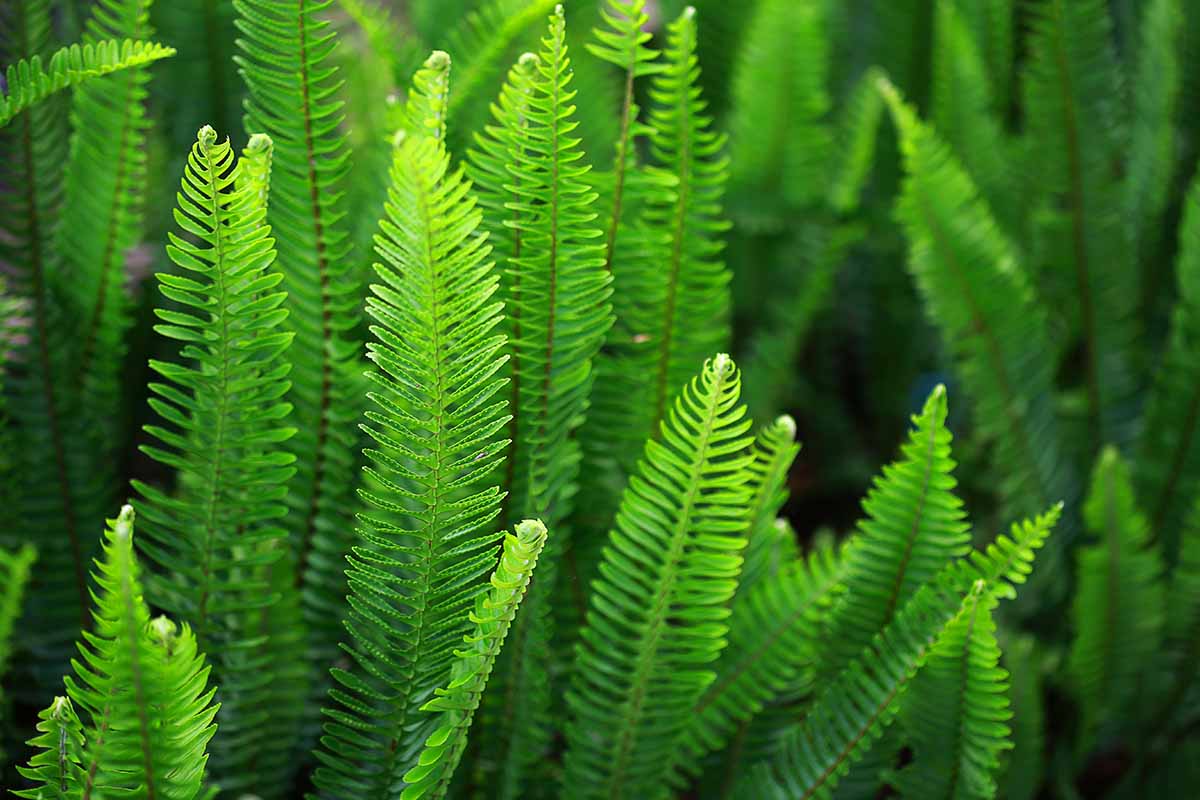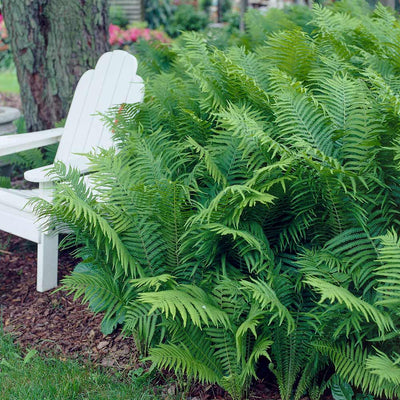Cinnamon Fern
Native to Eastern North America, Cinnamon Fern (osmundastrum cinnamomeum) is a large, beautiful plant specimen that can increase to about 4 feet tall, with some specimens growing as high as 6 feet tall. Cinnamon types produce two distinct fronds. The most distinctive frond that the plant develops for reproduction, which gives the plant its namesake, is a tall cinnamon-colored plume that grows out of the center of the plant.
The other frond this plant produces is the more familiar rich green plant leaf that many are most familiar with when imagining plants. The plant also produces rhizomes that can be collected and cultivated into new plants if desired. These plants naturally grow in very water-rich environments, near streams, ponds, or swamps, and with soil that is very rich in organic matter. This plant needs to be in soil that is continuously moist, so to avoid needing to water the Cinnamon type constantly, place it near a natural source of water. The cinnamon type grow best in full shade or very light sunlight.
Royal Fern
Native to moisture-rich areas of Eastern North America, the Royal type (osmunda regalis) is a robust plant with bright green foliage that is also known as the 'flowering fern' due to its spring emergence, including a pink hue, while the fronds are often crowned with rust-brown flower tips. In the fall, the royal foliage will change to a reddened brown color.
This plant can grow up to 6 ft. in height and spread to about three ft. wide. This plant has high water demands and is best grown in very wet environments with well-draining soil. Sunlight requirements fall into the category of full shade to partial shade but will tolerate full sun with added moisture provided. It is also considered resistant to deer and rabbits. The Royal type is definitely worthy of its name and would be a regal addition to any moisture-rich area or waterfront in a garden.
Giant Ostrich Fern

Native to moisture-rich areas of North America, the Giant Ostrich type (Matteuccia struthiopteris) Is a large plant that grows to a height of 3-6 ft. and spreads equally as wide. Its common name is derived from the resemblance between its very showy foliage and the tail feathers of an ostrich. The initial fiddleheads of the developing foliage are edible if desired, and this plant thrives in wet, boggy soil that other plants tend to find intolerable. Preferring shade, the Ostrich type is a gorgeous addition and will bring a burst of life to any wet and shady area of a garden that would otherwise be a very glum space.
This plant will thrive in areas that would prove to be a challenge to fill in with other plants. To place the giant ostrich type in a drier or sunnier area of the garden, water allowances must be taken into consideration as the plant will still have very high water demands in spite of some claims that it is a drought-tolerant specimen. Compared to other ferns, it may be more tolerant of drought, but drought is relative, and for this water-loving family of plants, more is better when it comes to moisture.


